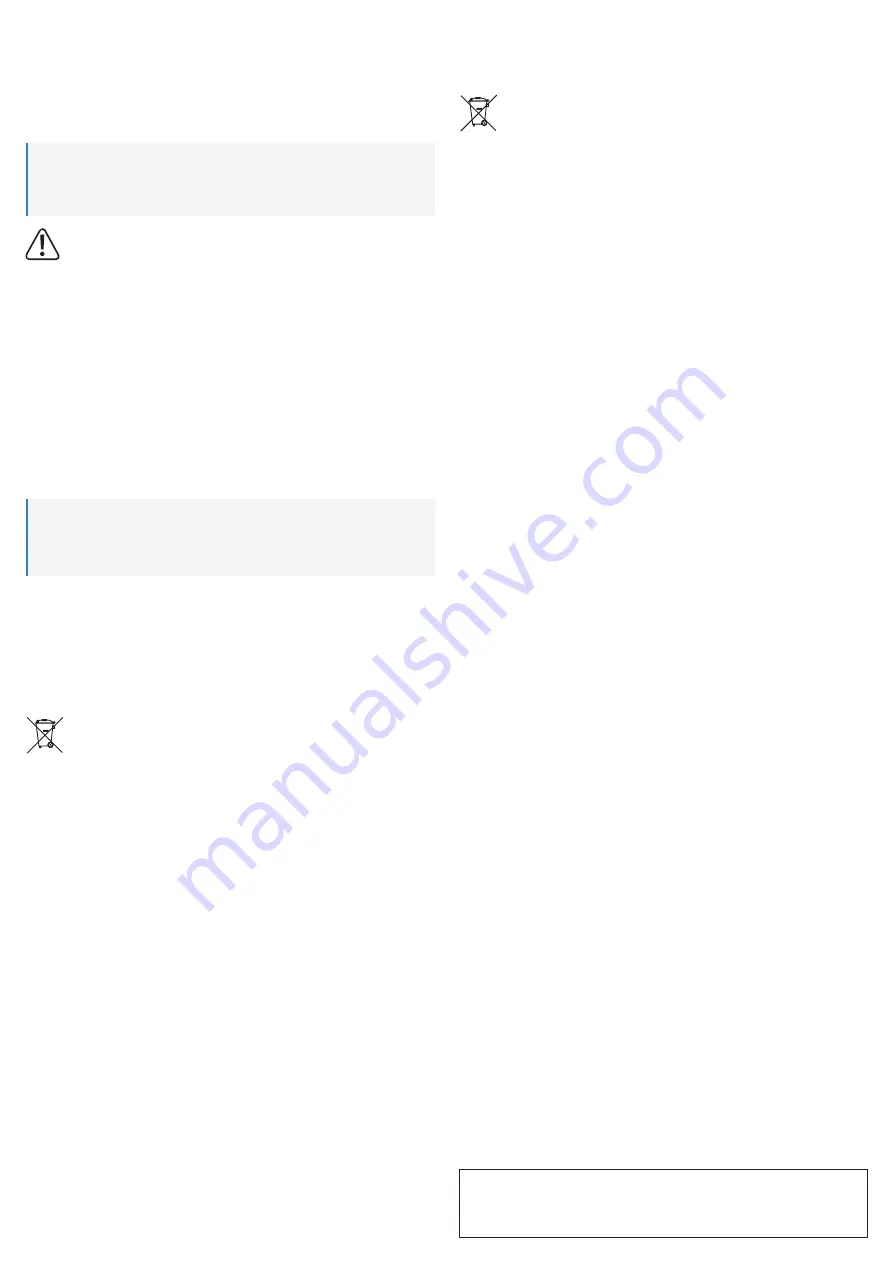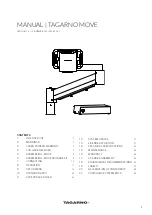
7 Installing the batteries
1. Slide open the battery compartment cover on the top of the magnifier.
2. Insert the new batteries (3x 1.5 V AAA batteries, not included), following the + and - ends
indicated inside the battery compartment.
3. Close the battery compartment cover.
8 Assembly and operation
Note:
This product contains strong magnets. Keep this product away from electronic devices or
magnetic storage media, such as magnetic cards, mobile phones, laptops, etc., to avoid
damage to the device.
WARNING! This product might interfere with hearing aids, pacemakers, or other
medical devices. Consult your physician before using this product.
1. Place the product on a flat, level and stable work surface.
2. Unfold the side bars of the magnetic base.
3. Remove the screw from the end of the neck of the magnifier. Align the end of the neck with
the hole in the middle of the horizontal bar. Tighten the screw on the bottom side of the bar
to secure the magnifier to the base.
4. Place the helping hands on the metal base. The strong magnets on the ends of the helping
hands allow you to freely position the helping hands on the metal base to suit your project.
5. Use the alligator clips to hold the part or object of your task. The alligator clips can be
rotated 360 degrees.
6. Adjust the flexible arms and neck to the desired angle.
7. Press (or slide, according to the product model) the ON/OFF button on the magnifier to turn
the LED lights on or off.
9 Cleaning and care
Important:
– Do not use aggressive cleaning agents, rubbing alcohol or other chemical solutions.
They damage the housing and can cause the product to malfunction.
– Do not immerse the product in water.
Clean the magnifying lens with a soft, dry cloth or lens cleaning tissue.
Wipe the metal base and attachments with a soft cloth, dry or lightly moistened with water.
Dry thoroughly after cleaning.
Store the product in a shaded, cool and dry place.
10 Disposal
10.1 Product
This symbol must appear on any electrical and electronic equipment placed on the
EU market. This symbol indicates that this device should not be disposed of as
unsorted municipal waste at the end of its service life.
Owners of WEEE (Waste from Electrical and Electronic Equipment) shall dispose
of it separately from unsorted municipal waste. Spent batteries and accumulators,
which are not enclosed by the WEEE, as well as lamps that can be removed from
the WEEE in a non-destructive manner, must be removed by end users from the
WEEE in a non-destructive manner before it is handed over to a collection point.
Distributors of electrical and electronic equipment are legally obliged to provide free take-back
of waste. Conrad provides the following return options free of charge (more details on our
website):
in our Conrad offices
at the Conrad collection points
at the collection points of public waste management authorities or the collection points set
up by manufacturers or distributors within the meaning of the ElektroG
End users are responsible for deleting personal data from the WEEE to be disposed of.
It should be noted that different obligations about the return or recycling of WEEE may apply in
countries outside of Germany.
10.2 (Rechargeable) batteries
Remove batteries/rechargeable batteries, if any, and dispose of them separately from the
product. According to the Battery Directive, end users are legally obliged to return all spent
batteries/rechargeable batteries; they must not be disposed of in the normal household waste.
Batteries/rechargeable batteries containing hazardous substances are labelled
with this symbol to indicate that disposal in household waste is forbidden. The
abbreviations for heavy metals in batteries are: Cd = Cadmium, Hg = Mercury,
Pb = Lead (name on (rechargeable) batteries, e.g. below the trash icon on the left).
Used (rechargeable) batteries can be returned to collection points in your municipality, our
stores or wherever (rechargeable) batteries are sold. You thus fulfil your statutory obligations
and contribute to environmental protection.
Batteries/rechargeable batteries that are disposed of should be protected against short circuit
and their exposed terminals should be covered completely with insulating tape before disposal.
Even empty batteries/rechargeable batteries can contain residual energy that may cause them
to swell, burst, catch fire or explode in the event of a short circuit.
11 Technical data
Power supply ...................................... 4.5 V, 3x 1.5 V AAA batteries
Light source ........................................ 2 LED lights
Magnification ...................................... 4X/6X
Main lens size ..................................... Ø 83.5 mm
Auxiliary lens size ............................... Ø 21 mm
Materials ............................................. Metal, magnet, ABS
Operating conditions ........................... -10 to +40 °C, 0 – 85 % RH (non-condensing)
Storage conditions .............................. 0 to +50 °C, 0 – 85 % RH (non-condensing)
Product dimensions (L x W x H) ......... 270 x 235 x 365 mm
Base ................................................... 270 x 235 x 15 mm
Magnifier ............................................. 115 x 25 x 365 mm
Helping hand (x4) ............................... 24 x 24 x 240 mm
Weight ................................................ 1.1 kg
This is a publication by Conrad Electronic SE, Klaus-Conrad-Str. 1, D-92240 Hirschau (www.conrad.com). All rights
including translation reserved. Reproduction by any method, e.g. photocopy, microfilming, or the capture in electronic data
processing systems require the prior written approval by the editor. Reprinting, also in part, is prohibited. This publication
represents the technical status at the time of printing.
Copyright 2022 by Conrad Electronic SE.
*2497610_v1_0322_02_DS_m_2L_(1)








